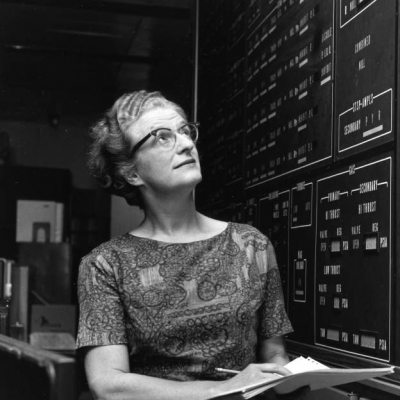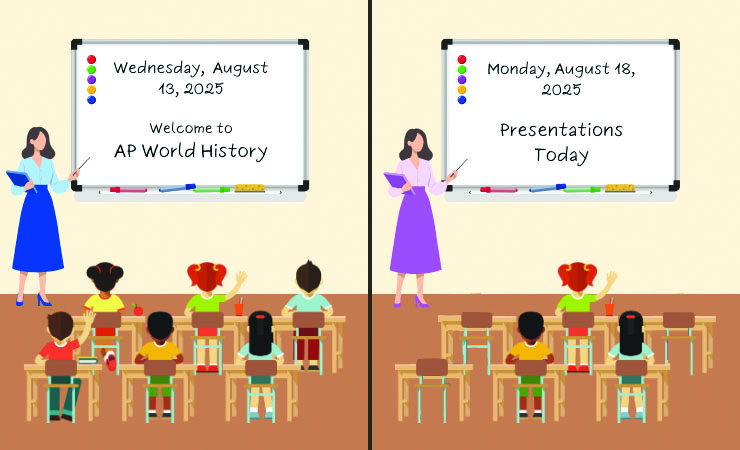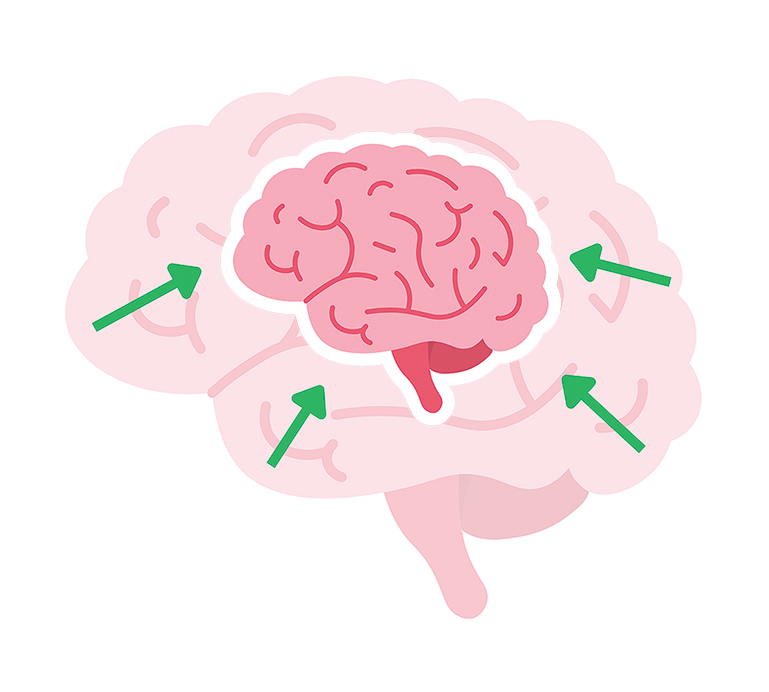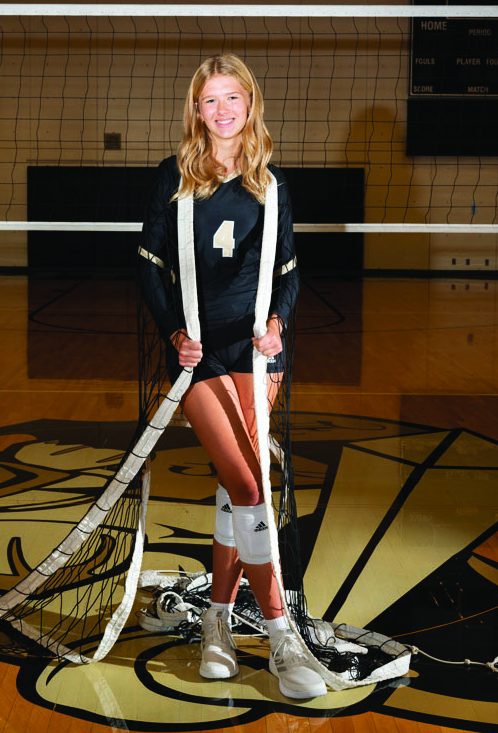Women in STEM: The fight to reverse underrepresentation and stereotypes in STEM fields

I still remember asking my high school guidance teacher to take a second year of algebra instead of a fifth year of Latin. Shye looked down her nose at me and sneered, ‘What lady would take mathematics instead of Latin?’ – Nancy Grace Roman, “Mother of the Hubble Telescope”
March 28, 2022
Society has come a long way since women were expected to stay in the home to cook, clean and care for children. Now, women have made huge leaps towards gender equality in the workforce, yet the effects of past gender roles and stereotypes still linger to this day, and are especially amplified in Science, Technology, Engineering and Math (STEM) careers.
Senior Lily Rippeteau is one of only two females enrolled in AP Computer Science this semester, and she has expressed having feelings of inferiority in the class before.
“That’s the one class that I felt less competent or less capable in,” she said.
Rippeteau is unsure whether her feeling of incompetence is a result of her gender, or just that she is not quite as committed to the class as her peers may be.
“But I find it interesting that that’s the only class I’ve had that experience and it’s also the class where I’m the minority,” she said.
Nationally, women in STEM careers make up only 28 percent of all STEM employees, according to American Association of University Women (AAUW). Men in STEM careers earn about 15,000 dollars more a year than white women, and about 33,000 dollars more than Latina or Black women. In the medical field, women outnumber men greatly; about 80 percent of healthcare workers are women. However, only about 21 percent are actually in leadership positions.
So what is the real reason for this large gap? Is it because men tend to have more of an interest in math and sciences? Is it because women are, at times, systematically discriminated against, not receiving credit for their achievements or consistently being doubted in the field? Could it be internalized misogyny, or even biological makeup? The reason for the gender gap in STEM careers is a combination of many different factors, full of complexity. It cannot be solved with one simple underlying issue.
At Lincoln Southeast High School (LSE), gender disparities of enrollment in both high-level STEM and humanities classes are prevalent. However, the gaps are not nearly as big as they become at the post-secondary level, displaying a gradual increase in the trend.
Adversely, there was actually a much greater trend of far fewer males enrolled in Advanced Placement (AP) humanities classes.
With a Human Behavior credit being required for graduation, one of the more shocking numbers for enrollment is AP Psychology, with 56 females, and merely 23 males enrolled in the class this semester.
As far as AP STEM classes, the gaps are much smaller, although there tends to always be at least a few more males than females in each.
AP Computer Science and Calculus teacher Alan Holdorf says that there is only one class where he sees clear gender disparities.
“Our upper level math classes don’t tend to have that large of differences in the number of female students, but AP Computer Science classes have had significantly more males,” he said. “In the past two years, I have had only one or two girls in AP Computer Science applications each year.”
These trends suggest that males tend to become confident in their career path earlier than women, thus explaining Rippeteau’s feelings of her male peers appearing to be more dead set on computer science.
Holdorf says that one reason for the gender gap may be that females just simply don’t tend to have as much of an interest in the subject.
“At the elementary level in LPS, every student takes computer science, so every student gets a chance to be exposed to the content. At some point in middle school, we are seeing fewer and fewer girls enroll in optional Computer Science courses, until we have minimal numbers in upper level high school courses,” he said.
Based on the classes taken by females from elementary to college, one can infer as to when women’s interest in the STEM field begins to take a nosedive; it is evident that the fascination slowly decreases with time and experience.
However, longitudinal studies done by the University of Illinois of Kindergarten classes from 1998-99 have shown that girls lose confidence in math and sciences at a very early age, which may be a reason for their reluctance to further their studies. And by the time girls’ confidence in it has dwindled, boys are more likely to say they are strong in math. Some of these factors are due to math abilities in girls being underestimated by parents and teachers. Also, with females being the majority of elementary age teachers, they may grade girls harsher because of subconscious expectations that girls need to work harder to reach the same level as boys.
Holdorf says that although he does not see demonstrations of female students feeling unwelcome quite as often in the high school environment, he understands that these feelings are common in higher level STEM.
Students who have taken AP psychology should be familiar with a lesson in the cognitive psychology unit called “The Dynamics of Intelligence”. This lesson discusses statistical trends of intelligence differences among groups of people, one of the groups being women compared to men. Although many of the differences between the two are very slim, the data presents women to come out either tied or victorious against men in all aspects of intelligence– all except for mathematical problem solving and spatial reasoning.
Rippeteau said when she learned this information, it gave her doubts about her own talents.
“I remember reading that and just being like: ‘well, I want to go into math. Does this mean that I’m not as good?’ I know that I’m good at this, but it does kind of make you question: ‘am I always going to be at a disadvantage?’ Or, ‘maybe I would be better if I was a man. Maybe I should do more of an English field because I would be better at that because that’s what psychology says’,” she said.
She feels as though this data could spread a harmful narrative to women hoping to go into the STEM field if not taught correctly.
“If it’s true, it’s important to learn. But at the same time, studies can be biased, and I think it’s just so important to emphasize while we learn that material that this does not say anything about you as an individual,” Rippeteau said.
Rippeatu believes that if people don’t think they can do it, they won’t be able to do it.
“It’s like a self-fulfilling prophecy. You tell people they’re not as good then they’re not going to have the confidence they need to do well,” she said.
Another one of the two female AP Computer Science students, Erica Hunsberger (12), says she has experienced a similar feeling of doubt because of this.
She says that even if there is no talent difference solely based on gender, she still saw it as: all the guys know what they’re doing, and she, being the only girl in that class, did not.
“So more often than not, it’s just me beating the crap out of myself for whatever I’m doing wrong,” she said. “But sometimes I’ll wonder if is this is just because of the psychology of girls versus boys because the chemical components in our brains are different.”
Chemistry teacher Frances Peterson believes that another factor may be that it’s harder for women to picture themselves in STEM, without many female role models.
“I know in our curriculum– and traditionally in chemistry– there’s a lot of men that we talk about, like, developing the model of the atom, just because there weren’t a lot of women even allowed to be in that field,” she said. “So I think it’s important to bring in some females when I can, because they’re definitely underrepresented in books and in the history of chemistry.”
Holdorf says that he, as well, makes an effort to ensure female students feel like there is a place for them in STEM classrooms.
“When I see students who might otherwise be discouraged from taking my classes, I generally make sure to offer them a specific invite to sign up for the class,” he said.
Peterson says that she is familiar with many occurrences in history where men have received all the credit for great scientific achievements that were actually the work of their wives, sisters or daughters.
She additionally says that she remembers feeling nervous to enter a field that– at the time– did not have very many women figures, after first majoring in Biology, a more female-dominated science field.
“I was kind of intimidated to be a chemistry teacher when in our district, it was at that time, strongly male-dominated. I wasn’t very assertive,” Peterson said.
Nevertheless, one thing Peterson takes pride in, is that her AP Chemistry class currently has more females than males enrolled. And while she finds it very important to represent female scientists, Peterson still believes in equal representation of all people.
“I think it’s pretty important to have it be as equitable as we can; I’d hate for it to swing totally the other way and not have representation for males or [other] minorities,” she said
Moreover, both Rippeteau and Hunsberger agree that their lack of discomfort in their AP Computer Science class, as well as all of their higher level STEM classes, can be credited to the excellent teachers and accepting peers they encounter at LSE.
“The teacher is fantastic and the students are all people that I enjoy being around and make me feel good to be around,” Rippeteau said.
Hunsberger relays a similar message.
“Holdorf is a great teacher who makes me feel like I don’t suck, even though I beg to differ,” she said.









